| CLICK HERE FOR INDEX PAGE |
| |
| DIETER RAMS |
V.Ryan © 2021 |
| |
| PDF FILE - CLICK HERE FOR PRINTABLE WORKSHEET |
| |
| CLICK HERE FOR POWERPOINT VERSION OF WORKSHEET |
| |
| Dieter Rams was born in Germany in 1932. He developed an interest in carpentry at an early age, due to watching the work of his grand father, a carpenter. His interest in skilled practical work, led to architecture and product design. He is associated with innovative product design, especially electrical / electronic consumer goods. The quality and innovation of Dieter’s designs, have led to international recognition and awards, culminating in the Lifetime Achievement Medal, at the London Design Festival, in 2013. He was one of the early voices against wasteful use of materials (‘less, but better’), consequently drawing attention to sustainability. His ‘Ten Principles of Good Design’ (see below), are often used as a reference by designers, during product design and development. Dieter Rams is considered to be one of the most influential industrial designers, of the 20th century. |
|
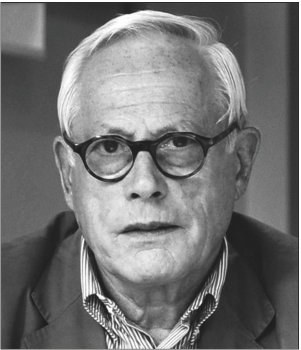 |
| |
|
|
| |
| He believes that the best designs are achieved by companies, through teams of designers. It is worth noting, that many ‘famous’ designers apply this approach, to architecture and product design. |
| His early training was in carpentry, followed by architecture and interior decoration at Wiesbaden School of Art, in 1947. He saw the importance of practical skills and completed his carpentry apprenticeship in 1948. After finishing his architecture degree in 1953, he worked for the highly respected, Otto Apel architects in Frankfurt. |
| Dieter Rams gave an influential speech in New York (1976), called ‘Design by Vitsoe’, in which he implored designers to take responsibility, for the state of the world around us. He emphasised the ‘increasing and irreversible shortage of natural materials’ and that good design, can only come from understanding people. |
| |
| Dieter Rams - Ten Principles for Good Design. |
| |
1. Good design is innovative
2. Good design makes a product useful
3. Good design is aesthetic
4. Good design makes a product understandable
5. Good design is unobtrusive
6. Good design is honest
7. Good design is long lasting
8. Good design is thorough down to the last detail
9. Good design is environmentally friendly
10. Good design is as little design as possible |
| |
| In 1955, Dieter Rams applied for a position at Braun, a German company designing and manufacturing innovative electrical / electronic products. His early work saw him designing the interiors of Braun’s new office interiors and later the wall-mounted ‘606 Universal Shelving System’, for furniture manufacturers Vitsoe. |
| |
|
|
| |
| 606 UNIVERSAL SHELVING SYSTEM BY DIETER RAMS |
| An innovative modular system, that is adjustable and extendable, fitting rooms of any size. The adjustable steel frame, allows shelves to be set at a variety of heights and distances. This system can be dismantled and moved to another location / home. |
| |
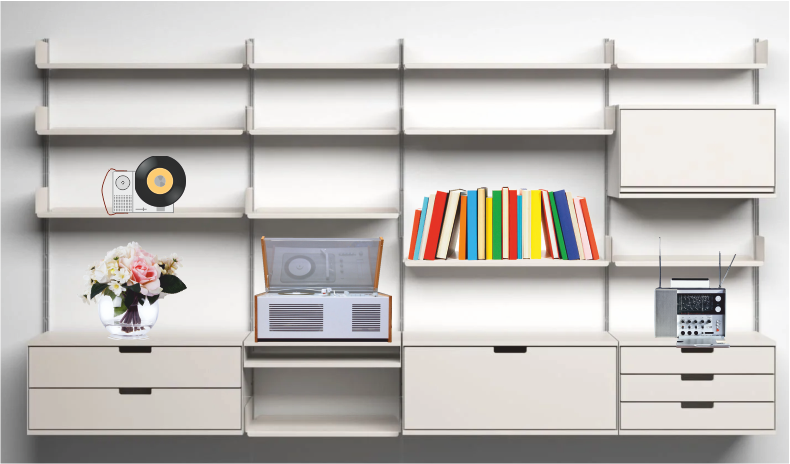 |
| |
| Braun grew a reputation for design innovation. With Dieter Rams, they developed a minimalist, simple, aesthetically pleasing style. Many of their designs have become iconic and influential products, inspiring many of todays designers. The ‘Braun’ style has been copied / adopted and replicated by other well-known brands. |
| |
BRAUN SK4 RECORD PLAYER AND RADIO
(KNOWN ALSO AS THE ‘SNOW WHITE COFFIN) - 1957, MANUFACTURED BY BRAUN. |
| |
| A wood, aluminium and acrylic construction. The transparent acrylic lid was revolutionary in 1957. A minimalist, modern design. |
| |
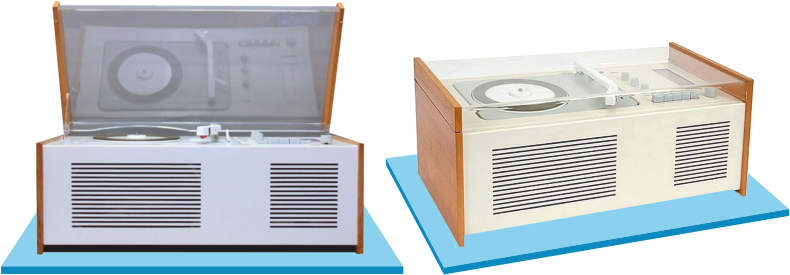 |
| |
BRAUN TP 2 1960 - POCKET RADIO AND
RECORD PLAYER |
| |
| A imaginative, portable, transistorised radio-record player, designed decades before the Sony Walkman of the 1980s. A user centred design. It consists of a battery powered pocket radio and record player, in a modernist, anodised, aluminium case. A simple, uncomplicated design and easy to use. A distinctive design, when it was first introduced in the 1960s. This modernist style has been adopted by companies, such as Apple Incorporated. |
| |
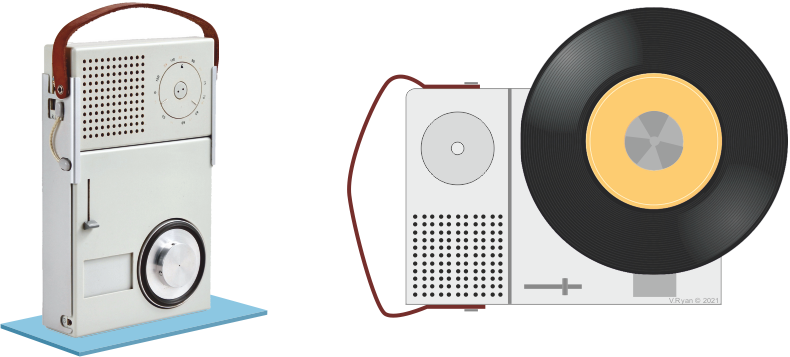 |
| |
HIGH-QUALITY 'D'-SERIES (D45, D46)
35MM FILM SLIDE PROJECTORS - 1960s |
| |
| A step forward in projector design. A deceptively simple, minimalist design, easy to carry and transport. An aluminium case contains all the parts and components. |
| |
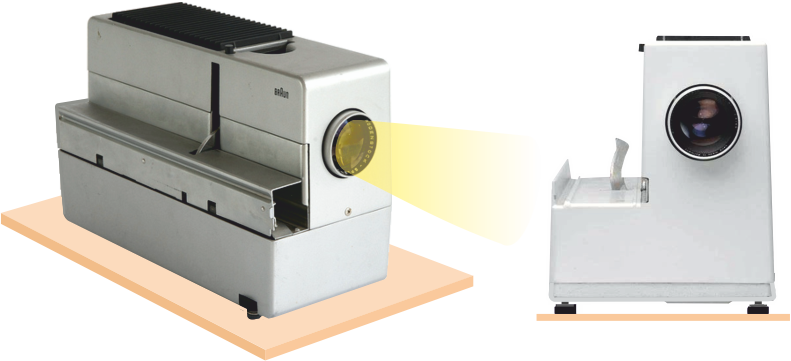 |
| |
601/ 602 RZ 60 CHAIR AND FOOTSTOOL
DIETER RAMS FOR VITSOE & ZAPF - 1961 |
| |
| A polyester shell supports the seated person. The shell’s comfort is enhanced by the addition of foam, covered in fabric or leather, all supported by an aluminium, lightweight frame. |
| |
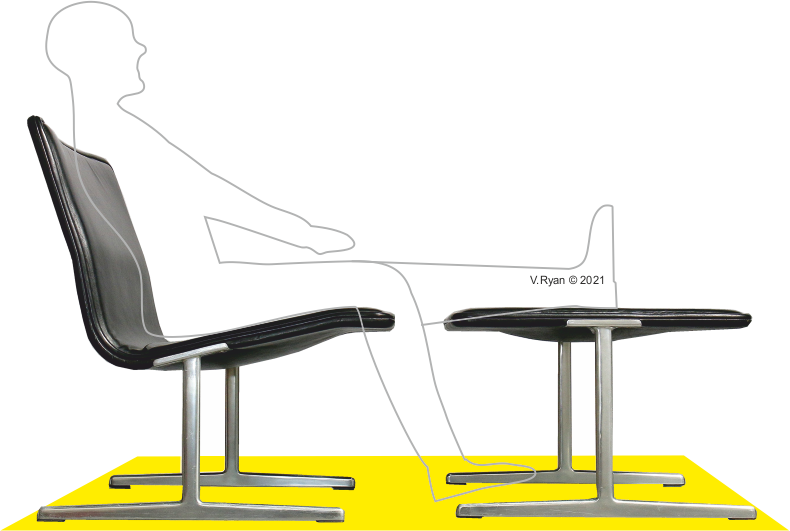 |
| |
620 CHAIR
DESIGNED FOR VITSOE-ZAPF
1960s |
| |
A modular kit and an adaptable seating system. The single lounge chair can be reconfigured into a sofa, by the addition of another seat. It is supplied with feet or casters.
The supporting frame is manufactured from precision engineered birch plywood. Internally, it has a typical coiled spring arrangement, for comfort. The arms and back are manufactured from a special moulding compound, much stronger than fibreglass. This chair was inspired by the way Charles and Ray Eames approached design. |
| |
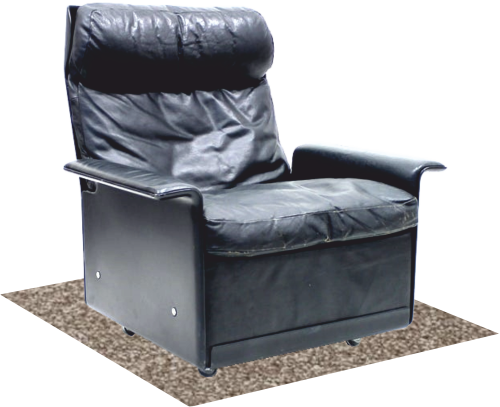 |
| |
|
|
| |
| WORLD RECEIVER T 1000 RADIO - 1963 |
| |
The electronics / electrics are held safely in the aluminium casing / outer shell. The original radio had a leather handle. Powered by battery or mains electricity. Lightweight, stylish and portable.
Designed to received radio stations from around the world, hence the number of aerials, dials and buttons. |
| |
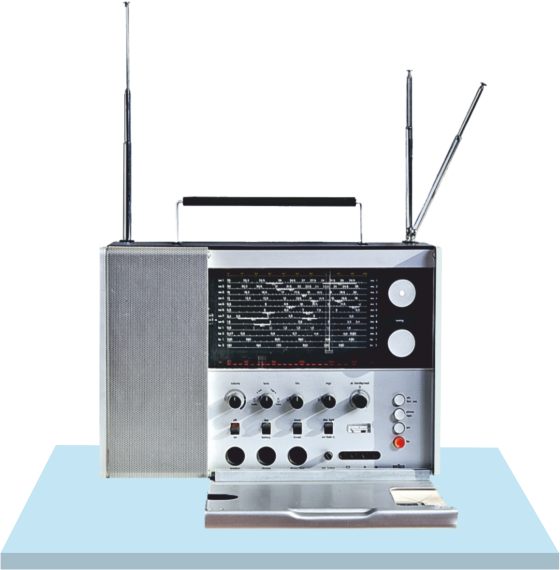 |
| |
THE ICONIC BRAUN ET66 CALCULATOR
1977 - THIS INSPIRED APPLE DESIGNER, JONATHAN IVE |
| The original design, was the first calculator to have colour-coded keys, which was subsequently copied by other companies, replicating the style. The design puts the user first, ensuring that the calculator is easy to operate, with clearly designated function and number buttons. A perfect combination of function, aesthetics and style. |
| |
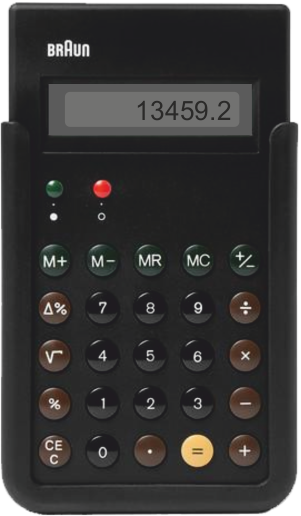 |
| |
THE CYLINDRIC T2 CIGARETTE LIGHTER
FOR BRAUN - 1968 |
| |
| The Braun Cylindric T2 Table Lighter included magnetic ignition technology, developed originally for engines. It was a desirable designer item for smokers. It was manufactured in a variety of finishes; painted metal, chrome plated steel and textured. This is an example of the way Dieter Rams combines modern technology, function, aesthetics and style. |
| |
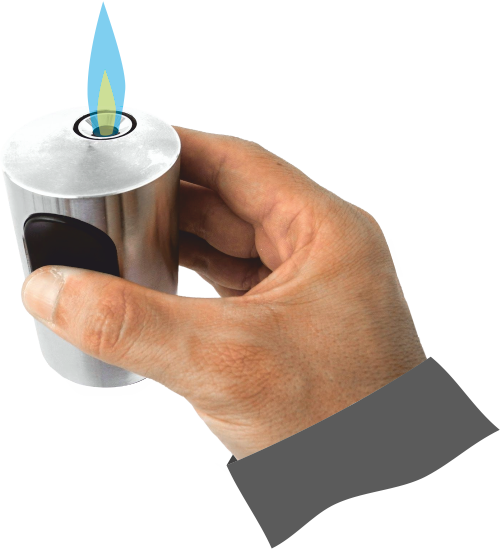 |
| |
| CLICK HERE FOR DESIGNER INDEX PAGE |
| |
|
| |
|









